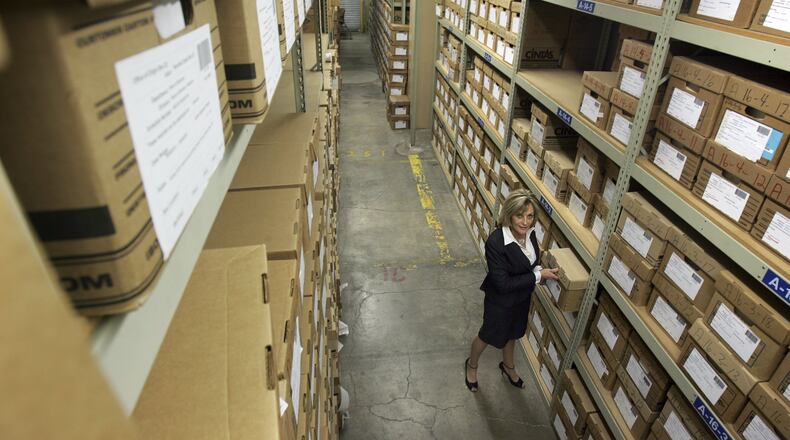The county received a $100,000 grant for the electronic filing project and an additional $8,900 to upgrade the court’s website through the Ohio Supreme Court’s Ohio Courts Technology Initiative.
Butler County Clerk of Courts Mary Swain — the custodian of court records — said the project will have far-reaching benefits.
“E-filing will provide the court with essential tools to continue its modernization,” Swain said. “With the increased virtualization and potential of a new e-services system, we will be replacing antiquated procedures with upgraded solutions that will modernize and streamline our processes, while saving taxpayer money.”
The project will take several years to fully implement and cost savings are hard to calculate at this time, Swain said, but as more of the court’s records are brought online staff will be reduced through attrition.
The Butler County Engineer’s Office will also begin to conduct more work digitally.
Butler County commissioners this week approved the use of an online bidding system for the engineer’s office, which bids out millions of dollars — $34 million in major capital improvements this year — worth of projects every year — all that currently require reams of documents in the process.
“(The online bidding system) streamlines the process, is more convenient and cost-effective for everyone and eliminates paper work,” said Butler County Engineer Greg Wilkens. “There should be fewer errors as the electronic process will catch any miscalculations and fields that have not been filled in. This is a big advantage for the contractors and will save us time here at our end.”
The county has been in the process of upgrading websites county-wide over the past several years. Residents can pay their water, sewer and tax bills online. A few years ago the county spent about $157,000 for a service that put building, water and sewer permits online.
Continually moving toward automating more services makes doing business with the county easier, according to Butler County Administrator Charlie Young.
“With the e-filing, with the electronic bidding, improving our payment portals, it enables people to more directly obtain service and obtain information,” he said.
One automation project that has stalled is the county parking garage. Commissioners dubbed the pay-at-the gate facility a “Stone Age” structure several years ago and embarked on upgrading it, but they have run into problems largely because there are so many different types of payers who use the facility. There are monthly, daily, hourly and some, like jurors, who get vouchers from the court to park for free.
Estimates to automate the facility ranged from $100,000 to $400,000, but the operative amount had been $200,000 to $250,000.
“We didn’t really like the answers we had as far as the cost of changing the way we operated it,” Young said. “But we are looking at that again particularly over the summer this year and seeing if things have changed enough now that we think it makes sense to invest… It’s just been a struggle because the return on that investment hasn’t been there to get us to invest in a new system.”
Up until a few years ago people normally wouldn’t go browsing the Butler County Coroner’s website, but with the opioid epidemic, coroner Dr. Lisa Mannix said the $9,000 being spent to upgrade the website is a good investment. Overdose death information is something people are interested in, she said.
“The key is we want to be able to get our statistics out there, in a timely manner and in a useful way,” Mannix said. “That’s what they are coming to the website now for. The current website doesn’t allow us to do that in a nimble way.”
About the Author
